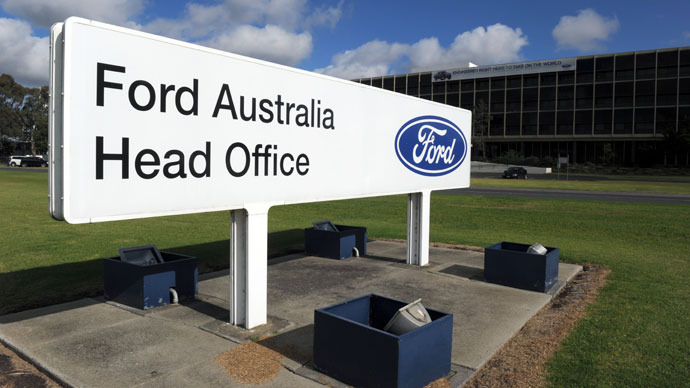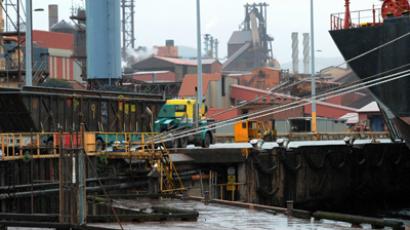Ford to shut down Australian production by 2016

The Ford Motor Company has decided to wind down production in Australia after 85 years. The car maker says the closure of two plants and the loss of 1200 jobs is because of production losses and the small market.
“Manufacturing is not viable for Ford in Australia for the longer term,” said Chief Executive of Ford Australia Bob Graziano. “Our locally-made products continue to be unprofitable, while our imported products continue to be profitable."
Is the dollar too strong?
-The rise of the Australian dollar versus the yen has created a high exchange rate, which makes the country's export market uncompetitive, especially in the Asia-Pacific block.
-Australia’s automakers and other manufacturing exporters have struggled with their currency’s 28 percent rise against the yen in the past year.
-The currency dropped as low as 96.62 US cents in the early hours of Thursday morning, its weakest level since June 2012, following weak Chinese data as well as the Ford news.
Analysts estimate the company has approximately $580 million in
losses in the last fiscal year, and profit fell by 72 percent.
Ford’s decision in Australia follows effort to also close shop in
Europe.
Graziano told reporters Australian production was no longer sustainable, as it was double the costs of Europe and quadruple the costs in Asia. The average hourly manufacturing salary in Australia in 2011 was $46.29, slightly lower than in Germany but 30 percent higher than the US and Japan, and nearly 75 percent higher than Brazil, according to US Department of Labor data.
This could be a warning for other foreign auto makers- Toyota and General Motors – which both currently plan to keep operations running.
The Australian government already highly subsidizes the car industry through a $5.4 billion fund, $34 million of which is allocated to Ford Australia.
Two plants in Melbourne and Geelong in the state of Victoria will be closed by 2016, giving workers 3 years notice, and offering a government rescue support package of $39 million.

Australia’s auto industry directly employs 45,000 people across the country, and another 250,000 indirectly, according to the Federation of Automotive Products Manufacturers.
Australia's population in 2012 was 22.8 million, a small market
to sustain both local production and sales.
Car registrations in Australia decreased to 93,423 in April of
2013, down 1,531 from March, indicating a drop in
sales.

Metals and and plastics industries, two of Australia's core, are
expected to feel the impact of the plant closure.
There has been speculation that the Carbon tax is a driving factor behind Ford’s decision to halt production.
Victoria Premier Denis Napthine, though confident of recovery, blames the carbon tax for hiking up production and manufacturing costs. The government has proposed to ditch the tax this coming December, but will not likely alter Ford’s decision to pack up and leave for cheaper labor and more profitable production.














